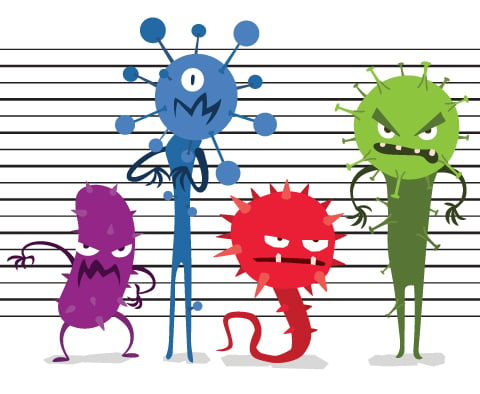Wound Dehiscence
Wound dehiscence is sometimes called wound breakdown, wound disruption, or wound separation. It happens when a cut made by a surgeon separates at the edges and the wound reopens. Like other types of poor wound healing, the causes of this separation include infection, increased pressure on the abdomen (for example, from heavy lifting or a severe cough), diabetes, poor diet, smoking, and obesity. Specific factors that can put you at risk for dehiscence include wound infection, vitamin deficiency, cancer, and steroid use.
Although it can happen at any time during the healing process, wound dehiscence typically happens in the early stages, usually four to nine days after surgery – and most commonly on the seventh day. A small area of the skin that has been cut may come apart or the incision may separate completely through all the layers of skin and muscle.
When you see that an incision has separated, it’s important to determine the extent of the problem. With superficial dehiscence, only the upper layers of skin have separated. You can apply a type of fitted cloth belt called an “abdominal binder” to this kind of superficial wound to reduce strain on the wound, prevent infection, and keep the cut from separating further. Deep dehiscence of the underlying muscle is a surgical emergency. The wound must be closed by a surgeon to prevent the organs of the abdomen showing or poking through the gap in the incision (a condition called “evisceration”). If the wound shows signs of evisceration, you can cover it with a sterile saline dressing until you can get to an emergency room.
Wound Dehiscence Infection Symptoms
Common symptoms include:
- Pain
- Redness
- Swelling
- Bleeding
- Fluid drainage
You may also have a fever. You or your doctor might be able to see loose or broken stitches or a gap where the edges of the incision used to meet.
MicroGenDX Tests Can Diagnose a Wound Dehiscence Infection
Growing microbes from your sample in a lab, also known as a culture, are often used to diagnose wound dehiscence infections. However, standard cultures might come back negative even when you actually have an infection. That means your infection won’t be treated. Rather than relying on culture, a MicroGenDX test detects the DNA of all microbes (fungi or bacteria) in your sample along with how much of each is present. This information is used to identify causes of the infection and the drugs that can best treat it.
To get complete instructions, you can order a WoundKEY test here: https://microgendx.com/product/woundkey-test-service-dm-intl/
Providing Samples for MicroGenDX Tests
Everything you need to know about how wound dehiscence samples are taken is included with the WoundKEY test. It’s also available online on the product page. The instructions included with your test contain illustrations to help your doctor collect a sample without contaminating it. It’s always important to obtain a proper sample by following the instructions for collecting the sample, as well as when packaging and shipping it. For example, be sure not to contaminate the sample by touching it with your hands. For best results, you must be off all antibiotics for two days before the sample is collected. However, if this isn’t possible, the test can still be run.
Your doctor will use one of two methods to provide a sample for this test: the swab method or “debridement,” which is the surgical removal of dead or contaminated tissue. Both methods start by using gauze and saline to lightly wipe the surface area to remove dead skin and tissue.
For the swab method, your doctor will roll the swab over the entire surface area of the wound, applying pressure as it moves across the wound. As much material as possible needs to be gathered on the swab to ensure a conclusive sample. Then the swab will be inserted into the specimen tube.
For the debridement method, your doctor might use a numbing agent such as injectable Lidocaine for your comfort. Then your doctor will collect the sample by scraping the entire surface of the wound. There might be a little bit of bleeding. If possible, your doctor will collect samples from all areas of the wound to ensure a full and accurate sample, and then transfer the sample into a specimen vial.
Medical Specialties Treating a Wound Dehiscence Infection
Prompt identification is important to prevent complications. Treatment can involve a wound care nurse, general or vascular surgeon, hyperbaric specialist, infectious disease consultant, dietitian, and physical therapist. Be sure to have a team of wound experts regularly assess the wound in order for it to heal successfully.
How a Wound Dehiscence Infection is Treated
Your specialist will investigate the wound for signs of possible complications, including infection. The first step is to determine the reason the incision separated in order to ensure that the wound will heal. The second step is to make sure that the wound is clean, has ample blood supply, and is regularly debrided (scraped) to remove dead tissue. When an infection is present, the MicroGenDX test will indicate options for antibiotics or antifungals your specialist can prescribe to treat the infection in the “antimicrobials for consideration” section of the test results.
References
- WebMD website, “What Is Wound Dehiscence?” Accessed 16 May 2022 from: https://www.webmd.com/a-to-z-guides/what-is-wound-dehiscence
- Nagle SM, Waheed A, Wilbraham SC. Wound Assessment. [Updated 2021 Jul 29]. In: StatPearls [Internet]. Treasure Island (FL): StatPearls Publishing; 2022 Jan. Available from: https://www.ncbi.nlm.nih.gov/books/NBK482198

